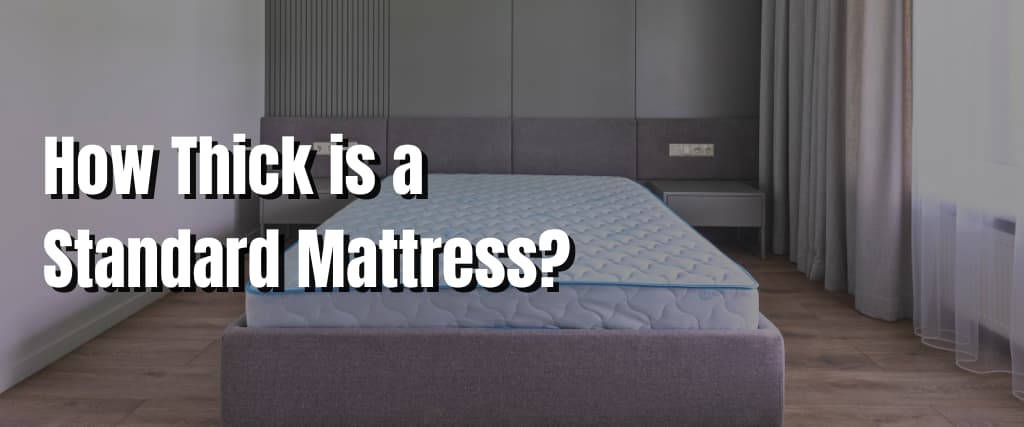Studies show that an average person spends a third of their life sleeping, making investing in quality mattresses one of the most significant expenditures a person can make.
Something being standard often suggests that it is normal. But there are different mattress thicknesses when it comes to bedding. This results from the different mattresses, different bed sizes, and unique characteristics like comfort layers, padding, and other elements.
Different mattress brands come with various features, so you’ll want to ensure that you pick a bed that offers the optimum comfort for sound sleep, whether for your bedroom, the kids’ rooms, or the guest room.
Mattress Thickness
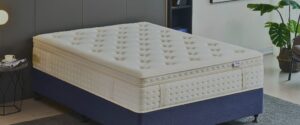
While the typical thickness of a mattress is ten inches (25 cm), some mattresses are eight inches (20 cm), and others can even be as thin as five inches (13 cm). And while inflatable mattresses are commonly associated with camping excursions or temporary guest room beds, they are typically between eight to ten inches thick.
Twelve-inch mattresses are used for thicker beds like pillow tops, pocket springs, or memory foam mattresses. Depending on how many extra layers of comfort they have, they may reach a height of 36 cm (14 inches).
Thick Mattresses
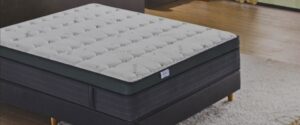
Sleeping on a thick mattress can be a fantastic experience; it might feel like floating on a cloud. Imagine how wonderful it could be to unwind from your hectic day by resting on pillowy padding. Multiple layers of thicker mattresses offer comfort and support, which is why their a higher bed height.
The latest mattress models frequently make use of cutting-edge sleep technologies. Steel coils within innerspring mattresses support your body weight and move with you as you move. A cushioned support is excellent for relieving pain, and other issues might be relieved.
Some of the best mattresses available today include four or more comfort layers, some of which may be latex or gel foam, plus a quilted pillow top for extra cushioning.
Comfort Layer
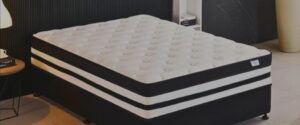
In thicker beds, the comfort zones are made of layers of various materials that offer improved cushioning and support for your muscular and skeletal systems.
The innerspring springs are positioned in the foundation layer so that they may respond to your every movement without giving you the impression that you are sleeping on springs.
A transition layer sits on top of the innerspring coil layer. This zone is followed by several layers of soft, cuddly support composed of memory foam and highly responsive gel, latex, or other polymers. You may find up to seven layers of heavenly padding in some pillow mattresses.
These comfort layers relieve pressure, promoting excellent sleep and reducing joint and muscular pain.
Additionally, the several layers of cushioning and pocket spring coils provide appropriate weight distribution and personalised support. Sharing a bed is advantageous if one person’s tossing and turning disturb a light sleeper sensitive to disturbances.
Memory Foam Mattress

Memory foam mattresses are a growingly standard bedside accessory for good reasons. They provide soft cushioning that supports and cradles your body weight.
A response from the intuitive foam meets every shift. Whether you sleep on your stomach, back, or side, it adapts to the positions you curl up into. Memory foam mattresses are also excellent for seniors and those with limited mobility.
With this sort of assistance, you have the chance to have a deeper, more peaceful sleep and wake up feeling revitalised. It lessens symptoms of morning stiffness or cramps brought on by a rigid, unsupportive mattress.
You may use different materials to create memory foam comfort layers. Due to their intuitive reactivity to body weight and movement, latex foam and liquid gel memory foam are widely recommended.
A further advantage of latex foam is that it provides improved ventilation and circulation, keeping you cool on humid evenings. Who hasn’t experienced losing sleep on a sweltering, steamy summer night, even with a comfy mattress?
Some bed toppers incorporate memory foam in latex, gel, or other materials because of the advantages and popularity of memory foam mattresses. Your best option is a hybrid, high-quality mattress.
Thin Mattress

The pillowy, cloudlike layers give some people sleepless nights. Perhaps the increased mattress height gives you the impression that you will need a ladder to get into bed each night.
Not everyone thinks that several soft cushioning layers are the ideal option for a peaceful night’s sleep. Such people often prefer thinner mattresses that offer firmer support.
It could appear that only soft mattresses with several layers of cushioning provide the best support for the spine and body. Everybody has various requirements, and some chiropractors believe those with chronic back pain benefit more from a thinner and firmer mattress because it offers more support.
A firmer, slimmer mattress distributes pressure more evenly across the bones, relieving the muscular system of supporting your weight as you sleep. The lower back does not collapse, and the internal organs are maintained. Additionally, it could improve air circulation.
This type of mattress may be a better choice for some individuals. For such individuals, it’s best to avoid mattresses that feel like rocks under their feet or beds with springs that press into their spine (unless you prefer it!).
Always choose bedding with a minimum eight to ten-inch mattress and a support system like innerspring coils (20-25 cm).
Mattress Size
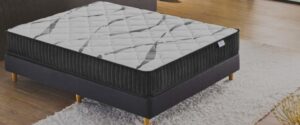
The hardness or softness, extra features, and comfort layers all affect a mattress’ thickness. However, a mattress’s size goes beyond its depth and height.
Single, long, queen, king, super king, king, and double mattresses are the standard mattress sizes.
Standard Mattress
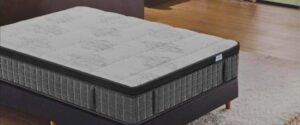
A single mattress should be 74 inches long by 35 inches broad. A long single and king single mattress has the length of a king mattress (approximately 80 inches or 203 cm), but the king single has an extra seven inches of breadth.
The length of a queen mattress, a king mattress, and a super king mattress are 80 inches (203 cm). On the other hand, their widths vary from 60 inches (152 cm), 72 inches (183 cm), and 80 × 80 inches (203 x 203 cm) square, respectively. With increasing mattress sizes, so do the prices.
None of the brand or kind of mattress, the length and breadth of mattresses typically stay within a few inches or centimetres of one another. Still, the height of mattresses can vary significantly. Because of this, it is wise to be aware of the mattress’s thickness.
However, most mattress producers create models with the same depth or height depending on the kind. Thus, all the measurements are the same if you’re purchasing a firm mattress (8-10-inch or 20-25 cm high). Compared to other models of the same sort, thicker versions will have a height ranging from 12-inch mattresses to 14-inch multilayered beds.
Base Layer

A mattress’s longevity and durability are primarily dependent on its foundation layer. Box springs are placed between the mattress and the bed frame to protect both and keep you from ending up on the opposite side of the room to prevent movement as you sleep and to provide stability.
All of that can stack up because modern mattresses have many comfort layers of coils and memory foam. Adding a box spring below might make it feel like you’re ascending a mountain to get to sleep.
This explains why box springs are now high and low-profile variants. Compared to a high-profile box spring, which lifts the mattress even further for individuals who love to sleep under the stars, a low-profile mattress or bed set rests closer to the ground.
Each option comes with advantages and disadvantages. Due to its capacity to counteract the increasing mattress heights, the low-profile box bed has grown in popularity. The high-profile box spring accommodates more common bedding and dust ruffles.
Most of the latest mattress models have elements like innerspring and pocket spring systems that incorporate their base layer into the mattress to safeguard the coils. In this instance, there is no need for an extra box spring to protect the bed from the bed frame.
Body Weight
Mattresses that are soft and have many layers of memory foam and coils may accommodate different body weights. Firm mattresses provide similar support but won’t conform as much to different body types and sizes.
Based on height and weight variations, sharing a bed might be difficult every night. Each sleeper’s body is supported regardless of position or movement by either thicker mattresses that offer the best support or thinner mattresses with the appropriate firmness.
That can guarantee little partner commotion, provide you with a pleasant night and lessen the likelihood of a cranky morning.
Mattress Toppers

Beds sets can cost a fortune. The bed frame, box spring, and mattress are all necessary bedding accessories. Some people may even purchase curtains that match their bedding style.
It seems sensible that when a high-quality product enters the market, people are cautious about purchasing a new mattress. But just because you are afraid to invest in a little-known product doesn’t mean you have to give up the benefits of modern bed technology.
If your old bed still has some resilience and life left in it, mattress toppers let you maintain it while also taking advantage of the benefits of a pillow top or memory mattress.
If you want to add memory latex mattress toppers made of gel or latex but don’t want to spend a fortune on a new bedroom set, these are great options.
Sleeping Position

A person’s sleeping position is essential when searching for a new mattress.
Memory foam mattresses provide the most flexibility and response to motion, making them perfect for side sleepers. Latex foam mattresses relieve pressure without sinking if the bed seems overly soft and enveloping.
Also, they are specially designed to prevent their back from sagging and lessen chronic back discomfort. This quality makes the mattress firmer, which is suitable for people who prefer sleeping on their backs.
You might be surprised to learn that many people switch to sleeping on their tummies when their mattress becomes too firm or uncomfortable. The unfortunate side effect of sleeping on your tummy is that owing to unequal weight distribution. It can put additional strain on your spine and back.
Go for a medium-firm mattress with supportive innerspring coils and memory foam if you prefer to sleep on your stomach.
Final Thoughts
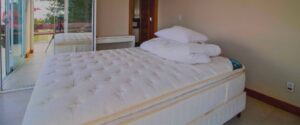
Discovering the ideal mattress can help you have a restful night’s sleep, fall asleep more quickly, and lessen or reduce chronic pain and suffering.
Examining your preferred sleeping position and how thick, thin, firm, or pillowy you like your bed to be can help you choose the perfect mattress for your needs. Happy dreams!

